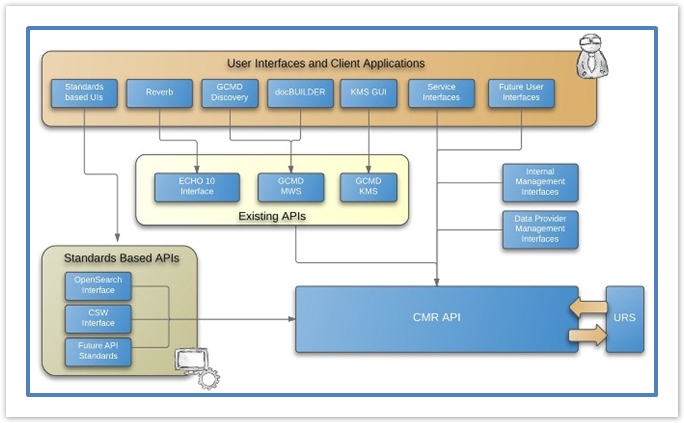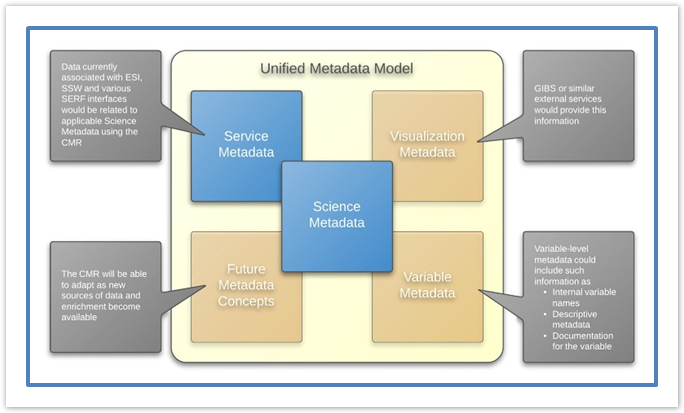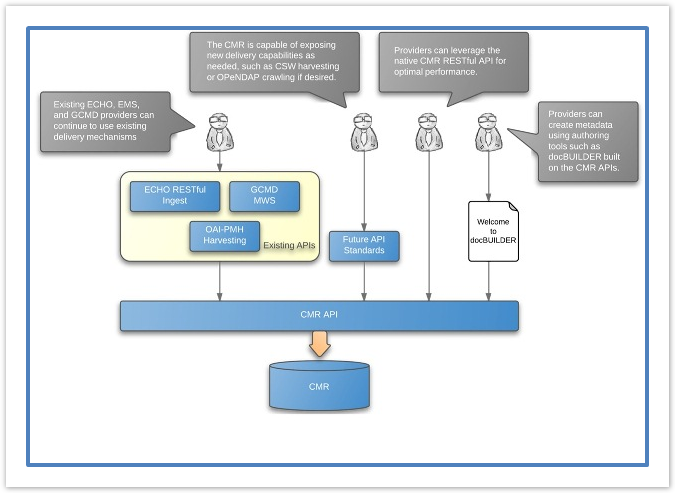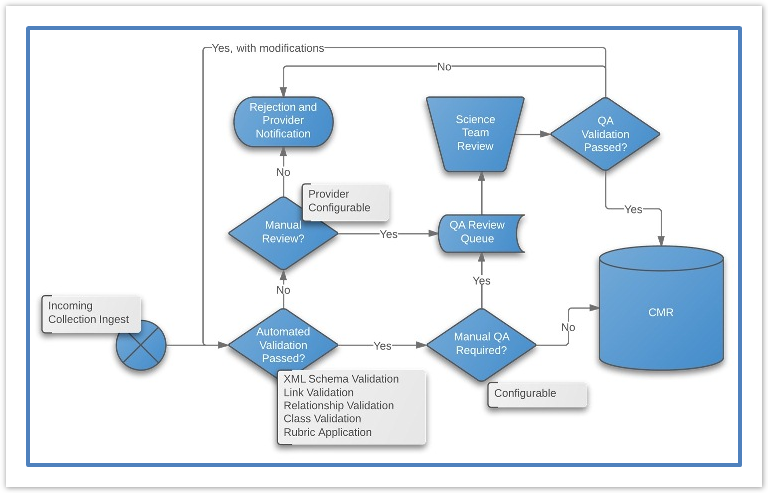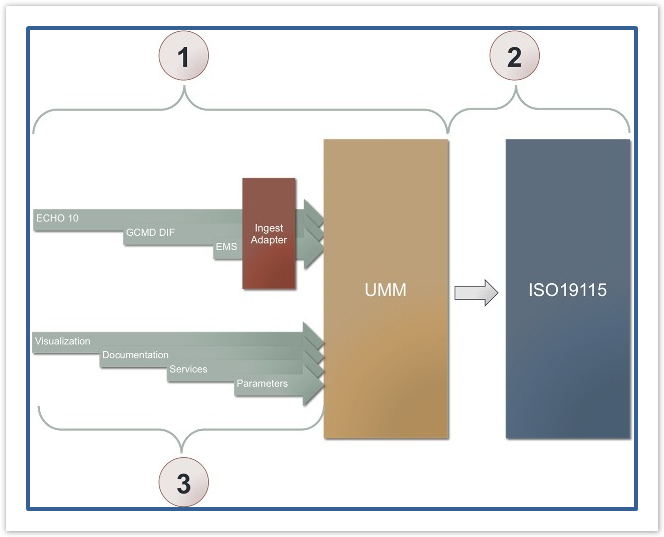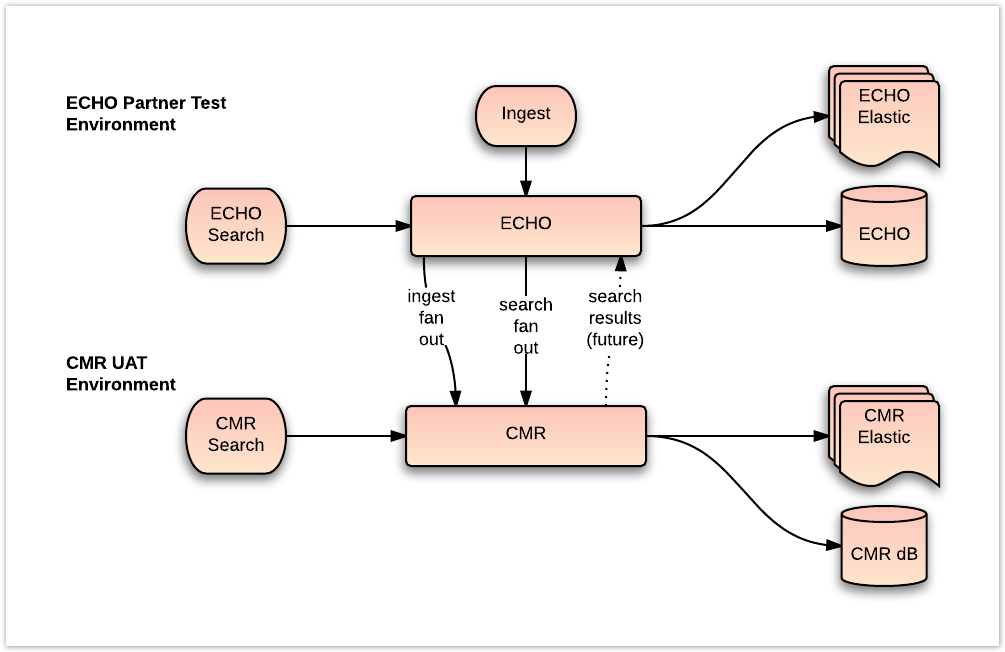Page History
| Page Tree Search |
|---|
| Panel | |
|---|---|
|
|
| |
NASA's Common Metadata Repository (CMR) |
is a high-performance, high-quality, continuously evolving metadata system that catalogs all data and service metadata records for |
NASA's Earth Science Data and Information System (ESDIS) and will be the authoritative management system for all EOSDIS metadata. |
These metadata records are registered, modified, discovered, and accessed through programmatic interfaces leveraging standard protocols and APIs. |
| Expand | ||
|---|---|---|
| ||
CMR is designed:
|
| title | CMR FAQ |
|---|
| title | How does CMR work? |
|---|
The CMR system is composed of:
- CMR itself (formerly the [ECHO])
- GCMD
- International Data Network (IDN)
- Earth Science Data and Information System (ESDIS) Metrics System (EMS)
- All related tools (internal and external)
- All metadata — including UMM concepts, the GCMD Keywords Controlled Vocabulary, and other controlled vocabularies.
High Level Architecture Diagram
The CMR is designed to handle metadata at the Concept level. Collections and Granules are common metadata concepts, but this can be extended out to Visualizations, Variable Parameters, Documentation, Services, and more. The CMR provides a flexible ingest system with pluggable adapters that can handle multiple metadata record formats, multiple metadata record concepts, and relationships and validations between them. As new formats are introduced, new ingest adapters can be written for the CMR to provide ingest, validation and search support and response adapters provide format conversions for backward compatibility.
Metadata at the Concept Level
| title | What are the benefits of CMR? |
|---|
Enhanced Performance
Modern Earth Science applications strive to provide end users with nearly immediate access and interactivity across massive stores of Earth Science data. That data is discovered, navigated, and often interrogated through science metadata. As the range of applications grow and more and more information moves from the underlying science data to metadata, the challenges of navigating even just the metadata increases. CMR is designed to handle hundreds of millions of metadata records; making them available through high-speed performance, standards compliant, temporal, spatial, and faceted search.
The CMR builds on the work done by ECHO and the GCMD to provide a unified, authoritative repository for NASA's Earth Science metadata.
End-User Interface Diagram
Quality Assurance
High performance access to metadata is only part of the problem. To be useful to a broad range of Earth Science applications, the metadata must be of high quality, complete, and consistent. The CMR incorporates both human and machine metadata assessment features that work to ensure the highest quality metadata possible. During ingest, automated metadata scoring rubrics are applied giving data providers insight into how to make their data more discoverable or usable by end users. Science Coordinators and review teams can review metadata that fails verification or lacks required information to help providers make their metadata more consistent and complete.
Metadata Quality Assurance Diagram
Consistent Metadata Representation
- The CMR's ingest adapter framework supports pluggable adapters which validate distinct metadata formats such as ECHO10, GCMD DIF, and ISO19115 against a common set of core metadata requirements, the Unified Metadata Model (UMM).
- The CMR will be able to take multiple metadata records associated with a common core concept, such as a Collection, and merge the disparate information into a robust and standards compliant ISO19115 representation for interested clients.
- As additional metadata concepts are introduced to the CMR, new ingest adapters will provide verification and search indexing capabilities across diverse metadata such as visualization and parameter information.
| Expand | |||||||||||||
|---|---|---|---|---|---|---|---|---|---|---|---|---|---|
| |||||||||||||
All search and ingest that are done via ECHO now will continue to be serviced. The ECHO API will work seamlessly with the CMR and will be backwards compatible. However, there is a period of transition from returning ECHO results to returning CMR results. During this transition period, ECHO will fan-out ingest and search requests to the CMR system.
|
| Panel | ||||||||
|---|---|---|---|---|---|---|---|---|
| ||||||||
CMR Links UMM Links |
| Panel | ||||||||||
|---|---|---|---|---|---|---|---|---|---|---|
| ||||||||||
|
| Panel | ||||||||
|---|---|---|---|---|---|---|---|---|
| ||||||||
| Panel | ||||||||
|---|---|---|---|---|---|---|---|---|
| ||||||||
ECHO Home and Technical Documentation |
| Panel | ||||||
|---|---|---|---|---|---|---|
| ||||||
| Panel | ||||||||
|---|---|---|---|---|---|---|---|---|
| ||||||||
|
...
For more information on the CMR, please see the CMR Earthdata Homepage. |
| Panel | ||||||||
|---|---|---|---|---|---|---|---|---|
| ||||||||
For more information, see https://cmr.earthdata.nasa.gov/search |
| Panel | ||||||||
|---|---|---|---|---|---|---|---|---|
| ||||||||
For more information, see UMM Documents |
| Panel | ||||||||
|---|---|---|---|---|---|---|---|---|
| ||||||||
Questions, comments, technical issues, and change requests should be sent to: support@earthdata.nasa.gov |
| Panel | ||||||||
|---|---|---|---|---|---|---|---|---|
| ||||||||
CMR Data Partner User User Guide Onboarding Process for a New CMR Provider For more information, see https://cmr.earthdata.nasa.gov/ingest/ |
| Panel | ||||||||
|---|---|---|---|---|---|---|---|---|
| ||||||||
| Panel | |||||||||||||
|---|---|---|---|---|---|---|---|---|---|---|---|---|---|
| |||||||||||||
|
| Panel | ||||||
|---|---|---|---|---|---|---|
| ||||||
